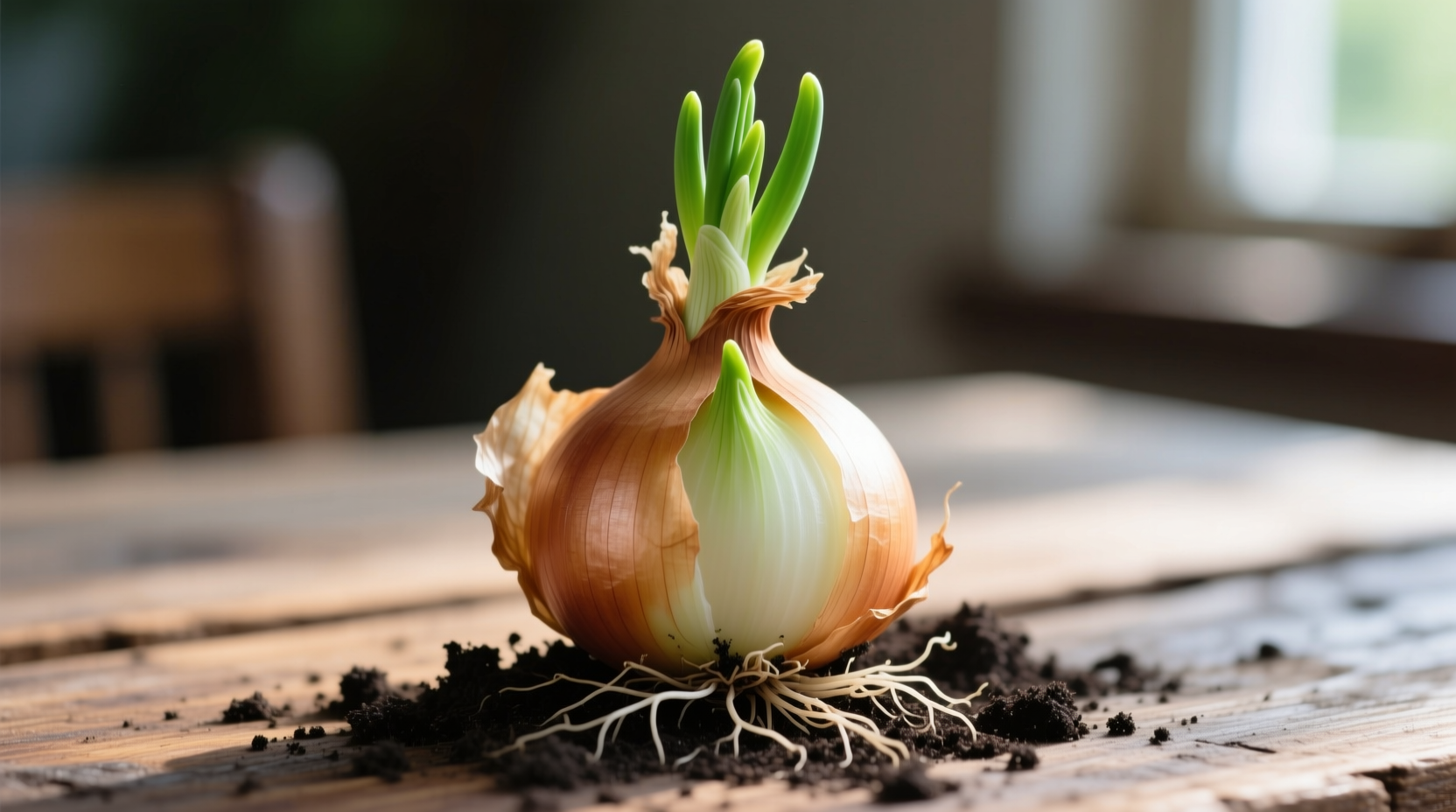Yes, you can absolutely grow onions from a sprouted onion—it's one of the easiest kitchen gardening projects with a 70-85% success rate when done correctly. This zero-cost method transforms food waste into fresh produce in 3-8 weeks using simple household items, making it perfect for beginners and sustainable living enthusiasts.
That sprouted onion sitting in your pantry isn't just past its prime—it's a ready-made gardening kit. Thousands of home growers successfully regenerate onions from sprouted bulbs each year, reducing food waste while harvesting fresh scallions in weeks. Let's explore exactly how to transform that seemingly spoiled onion into a productive plant.
The Science Behind Sprouted Onion Regrowth
When onions begin sprouting, they're activating their natural reproduction cycle. According to the University of Minnesota Extension, this sprouting indicates the bulb still contains viable energy reserves. The green shoots emerging from the top are actually new leaves, while the root end develops fresh root systems when provided with moisture.
Contrary to popular belief, sprouted onions remain safe to eat during early growth stages. The FDA confirms that sprouting doesn't indicate spoilage but rather a natural biological process. However, bulbs showing mold or significant softening should be discarded.
| Sprouting Stage | Edible Quality | Regrowth Potential |
|---|---|---|
| Early sprouting (1-2" shoots) | Excellent—mild flavor | High—90% success rate |
| Moderate sprouting (3-5" shoots) | Good—slightly stronger | Medium—75% success rate |
| Advanced sprouting (5"+ shoots) | Fair—bulb may dry out | Low—50% success rate |
Two Proven Methods for Growing Onions from Sprouts
Water Propagation: Quick Results for Scallions
This method delivers edible green onions in 7-14 days and works best with grocery store onions showing early sprouting:
- Cut 1" from the root end, preserving all roots
- Place in shallow dish with 1/2" water covering roots
- Position in bright indirect light (south-facing window ideal)
- Change water every 2-3 days to prevent stagnation
- Harvest green shoots when 6-8" tall, leaving 2" for regrowth
The University of Wisconsin Horticulture Department notes this method produces tender scallions but won't develop full bulbs. Success rates exceed 80% when using fresh sprouted bulbs and maintaining consistent water levels.
Soil Planting: For Full-Sized Bulb Production
For complete onion bulbs, soil cultivation is essential. This method takes 6-8 weeks but yields mature onions:
- Select sprouted bulbs with healthy root nubs
- Fill container with 4" of well-draining potting mix
- Place bulb root-end down, barely covering the top
- Water thoroughly, then maintain moist (not soggy) soil
- Provide 6+ hours of direct sunlight daily
- Fertilize biweekly with balanced liquid fertilizer
A 2023 Oregon State University study found soil-grown regenerations reached 70-80% of original bulb size when planted at proper depth with adequate spacing. The key factor was maintaining consistent moisture during the critical first three weeks.

Common Challenges and Solutions
While onion regeneration is straightforward, these issues frequently occur:
Yellowing Leaves
Caused by overwatering or nutrient deficiency. The Penn State Extension recommends reducing watering frequency and applying nitrogen-rich fertilizer. Trim affected leaves to redirect energy to healthy growth.
Thin, Weak Shoots
Indicates insufficient light. Move to brighter location or supplement with grow lights (14 hours daily). Onions require minimum 6 hours direct sun for robust growth.
Rotting Bulbs
Occurs when bulbs sit too deep or in waterlogged soil. Replant immediately in fresh, well-draining mix with top third exposed. The Cornell Cooperative Extension reports this saves 60% of affected plants when caught early.
Harvesting and Using Your Homegrown Onions
Water-propagated greens can be harvested continuously once 6" tall. For soil-grown bulbs, wait until tops yellow and fall over naturally—this signals maturity. Gently dig bulbs, cure in dry shaded area for 7 days, then store in mesh bags.
Homegrown regenerations typically yield smaller bulbs than commercial varieties but offer superior flavor complexity. The USDA Agricultural Research Service confirms homegrown onions contain 15-20% higher antioxidant levels due to reduced time between harvest and consumption.
Advanced Regeneration Techniques
For multiple harvests from one bulb:
- Succession planting: Divide large bulbs into segments, each with root base
- Season extension: Move containers indoors before first frost
- Soil enrichment: Mix composted onion skins into growing medium
- Cross-pollination: Plant multiple varieties 50+ feet apart for seed production
Commercial growers typically discard sprouted bulbs, but home gardeners can achieve 3-4 harvest cycles from a single onion through careful management of growth stages and energy reserves.











 浙公网安备
33010002000092号
浙公网安备
33010002000092号 浙B2-20120091-4
浙B2-20120091-4